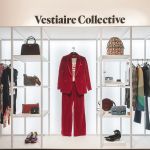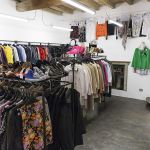
Second-hand is the future of fashion
From aesthetic taste to an ethical choice, pre-owned has never been so cool
December 23rd, 2020
In the last few years, the conversation in fashion has developed mainly around three key words: inclusion, diversity and sustainability. It is useless to deny that our style is a product of the environment in which we live, where the new ecosystem of used garments recycling has had a tremendous impact on the world of retail and has seen phenomenal growth in recent years.
What does second-hand mean
One of the basic principles of this philosophy of recycling is the second-hand economy, or the recovery and sale of used items, a practice that makes the consumer more responsible and aware of the environmental impact that the textile industry entails. Obviously this topic increases the desire of customers to buy clothing from environmental-friendly brands that invite us to reflect on the fact that the clothes we wear should never be disposable.
In fact, even fashion houses over time are starting to conceive production no longer as a linear process but rather as a circular system, in which not only the moment in which a garment is sold is considered but also the materials used and the entire production process that involves it, including disposal.
The increase in second-hand purchases is an inevitable consequence of the influence of the major trends in the global fashion market, like recycling and environmental sustainability with zero impact. In fact, buyers of used garments increased by 64% compared to 2016 and this percentage continues to increase day by day.
A little because of the economic crisis, a little because of the pressure exerted by the media and environmental associations that rail against hyper-consuming and waste, second-hand has become the solution to the many evils that afflict the textile sector.
Who buys second-hand
The customers that this market includes is increasingly varied both in terms of budget and age; in fact, the most assiduous buyers are people belonging to a medium-high range and aged between 24-38 years. It is the young people who will carry on this current of thought, in fact as many as 46% of the so-called Gen Z admits to buying from second-hand shops and will continue to prefer the latter over products from the fast-fashion market. There are two trends that have most encouraged the growth of this circular market economy: sustainability and social media.
As for the first, the fashion sector is responsible for 20% of global water waste and 10% of carbon dioxide and greenhouse gas emissions. This means that the clothing industry is literally becoming an environmental problem, as a lot is produced, too much, polluted and practically everything is thrown away.
Unfortunately, in the past, shopping driven by environmental ethics was seen as a luxury due to the list price of "eco-friendly" products, but now thanks to second-hand it has become more accessible to buy garments of this type. To be clear, if everyone bought a second-hand garment in 2020 instead of a new one, we would have saved 5.7 billion tons of CO2 emissions, the same result that we would get if we took half a million cars off the roads a year.
All this invites us to rethink the entire production chain as a product of the union of the ethical issue with the ecological one, where aesthetics is synonymous with the term "responsibility".
Less is more
This is exactly the guiding term of the phenomenon of “decluttering”, where less is more is conceived as a philosophy of life and a premise of happiness. This silent revolution is often referred to as Kondomania (by the guru of the organization Marie Kondo) and sees the reselling phenomenon both as a way of getting rid of the superfluous, thus transforming a waste into a new opportunity for reuse, and as an assist in building a minimalist and sustainable wardrobe.
The role of social media
It is also essential to talk about the social media issue. In fact, with the phenomenon of fashion bloggers the need arises from the public to always view new style and outfit proposals on Instagram, and to buy new items every day to follow the trends of the moment.
Often, however, users no longer invest in the "new" but in used garments that will be resold on the major online reselling platforms (some studies on this point indicate that today as many as 40% of consumers consider the value of resale before buying a garment).
What does the second-hand offer?
Who by "second-hand garments" means heaps of old and damaged clothes, therefore has to change their mind; in fact, in addition to offering vintage items exhumed from the old wardrobes of grandmothers, it also offers products from a recent past, which most often include items from 1-2 previous seasons resulting from a poorly thought-out purchase by buyers who want to get rid of them, or by fashion bloggers who after showing them to their followers on Instagram, consider them useless to keep.
The second-hand boom is also democratizing the pleasure of being fashionable by clearing the concept of second-hand items and making luxury items accessible to an increasingly wider audience.
In fact, due to the economic crisis and the unexpected increase in prices on luxury goods (the retail price of the Louis Vuitton Speedy Bag increased by 19% more than in 2016), customers could no longer afford to show off the designer products. . Therefore, thanks to the sudden boom in the second-hand economy, the public was able to allow themselves to give free rein to their style and make their fashion identity more concrete, without spending exaggerated amounts.
Let's talk numbers
Let the numbers speak now: in the last 3 years the second-hand market has grown 21 times more than that of traditional retail. The second hand trend is a transversal trend as it is capable of thrilling both consumers interested in savings and regular customers of high fashion.
Consequently brands like Burberry, Alexander McQueen, Versace, are among the most requested on online resale platforms such as Vestiaire Collective, Rebag, Depop, Rebelle. On Vestiaire Collective, for example, more than 400,000 items are offered for sale and 3,500 are deposited every day: since 2017, the year the platform was opened, the audience has increased by 56% and by 2023 there is an 83 percent increase.
Not only online shopping, in fact there are now more and more physical stores, among which we can name the 3 points of sale of the fashion resale store Bivio in Milan, the first resale fashion store in Milan, whose buying and selling philosophy perfectly reflects the spirit of an ecological choice but steeped in style, where the clothes express a reflection on time and the value of the wearer. The brands on display include classic fashion houses such as Gucci, Prada, Armani, Miu Miu, Chanel, up to the streetwear field with brands such as Palace, Supreme, Carhartt, Nike or Converse. There is no shortage of tailored suits and archival pieces by Gianni Versace, Franco Moschino or CP Company. Among the brands always in pole position we find Burberry, whose pieces are always in great demand, while among the best-selling items we find shoes, dresses, trousers, coats, shirts, jackets and many accessories.
The owner of Bivio Hilary Belle Walker has chosen a winning social strategy: stories are published daily on Instagram with new items in the store, and posts portraying the shop assistants wearing the proposed garments with information on the brand, size and price.
It is interesting to find out how much research, updating and dedication is needed in the selection of garments that satisfy customers who demand quality and respect in the sale of pre-owned. This is why we define the second-hand as a term that is expressed in the past but reads in the future.






























































































































